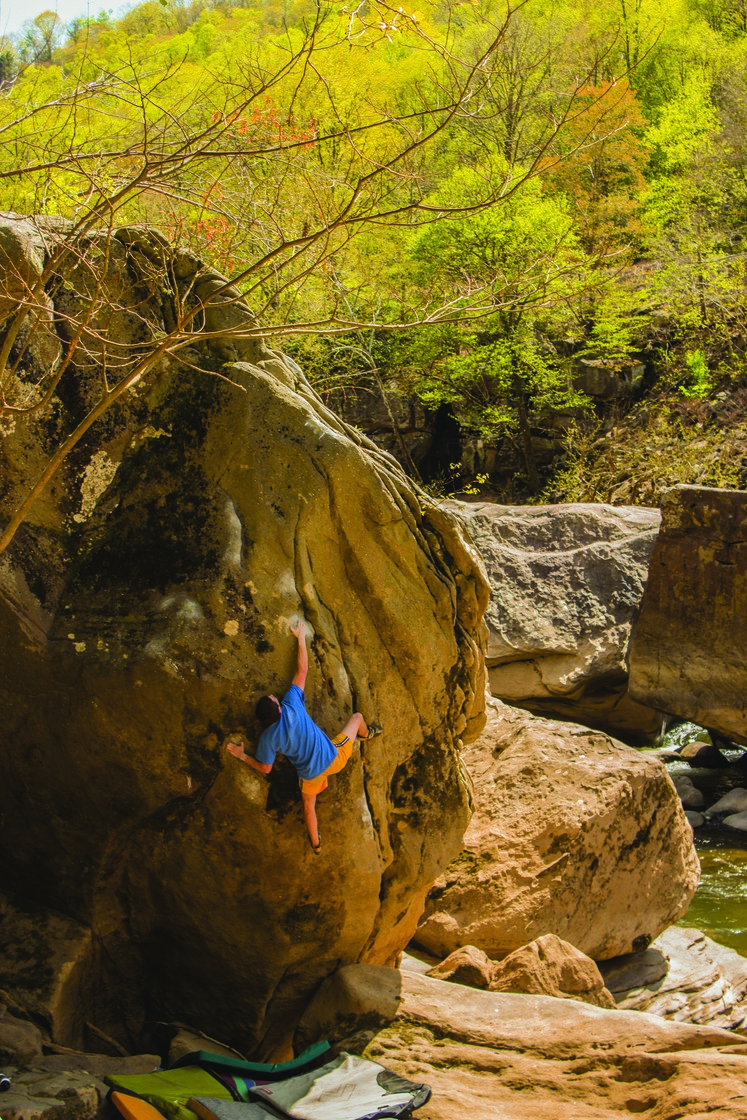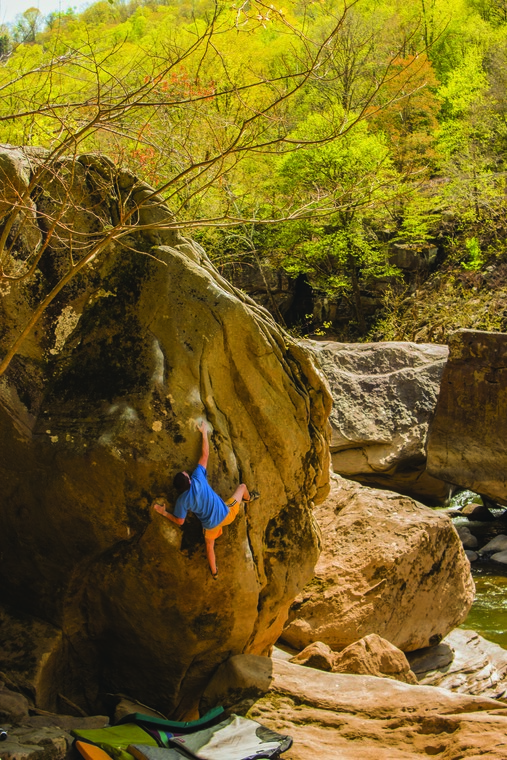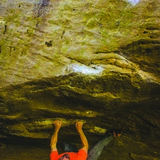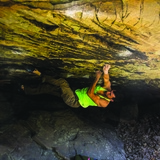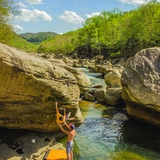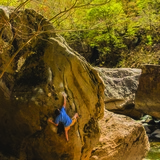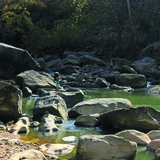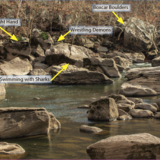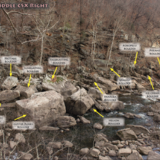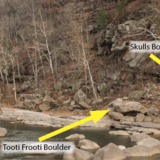*** CSX boulders are water dependent, see below.
CSX is a true New River Dries experience. Large, water smoothed boulders sit along and in the river. Although often under-featured, the lines that do emerge on the Dries tend to be pure and proud. The area is a delight to explore even without the climbing, a new section of river bank hidden behind each boulder cluster. Comfort with navigating riverside talus is helpful, as while all of the boulders sit in a narrow strip between the cliff line and water, there may be only one narrow, cryptic path. Climbing over and between boulders is often required. The rough terrain has its benefits -- it is rare to see other people here, even fellow climbers. This area caters most to the V8-V10 climber with "Judah" and the "David and Goliath" variations being unique-for-the-New, non-morphologic roof climbing on small crimps/edges.
🚶♂️ Approach summary - Very rugged approach. Work gloves are recommended for the knotted rope on the steep approach gully. People have been injured from loose rock in this gully. Hiking time 15 to 45 minutes.
💎 Notable problems - "Celestial Dawn" V3, "Kokopelli" V5, "Badass" V5 (best in early fall, be ready to wade), "The Raven" V8, "The Tipple" V8, "Lipstick" V9, "Judah" V10, "David and Goliath" V10/11
💧 Dry time - Hours to 1 day. No additional wait time needed once rock is visibly dry.
🍂❄️🍃 Seasonal Beta - Best fall to spring, it is warm on the river in the summer.
🌊 Water Level Beta - Highly water level dependent and is best at minimum flow (about 4.35 ft), see below.
🚗 Drive from downtown Fayetteville - 15 minutes
🚗 Drive from Summersville - 40 minutes
🚽 Bathrooms - None. There may be toilets installed soon at the riverside parking area just upstream.
📶 Cell phone service - 2/5, spotty.
🐶 Dogs - Dogs are okay. Be careful with your dog along the road. Dogs must be agile who can navigate a steep hillside and riverside talus.
*** Be sure to check water levels before making the approach. This area is highly water dependent and it is advised to go during minimum flow especially for first timers. It is difficult to get farther downstream than the Compression Project Boulder if the water is not at minimum flow. The water is usually minimum flow for most of July through at least the end of October. Minimum flow is currently about 4.35 ft (it used to be under 4ft, but the minimum flow has increased in the past few years). You can check the level at: https://waterdata.usgs.gov/usa/nwis/uv?380649081083301
